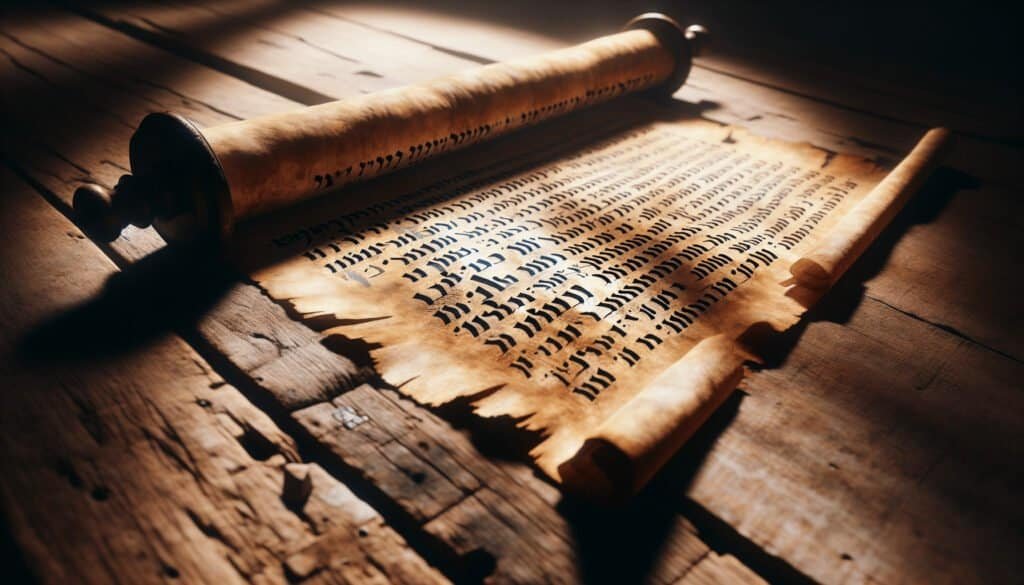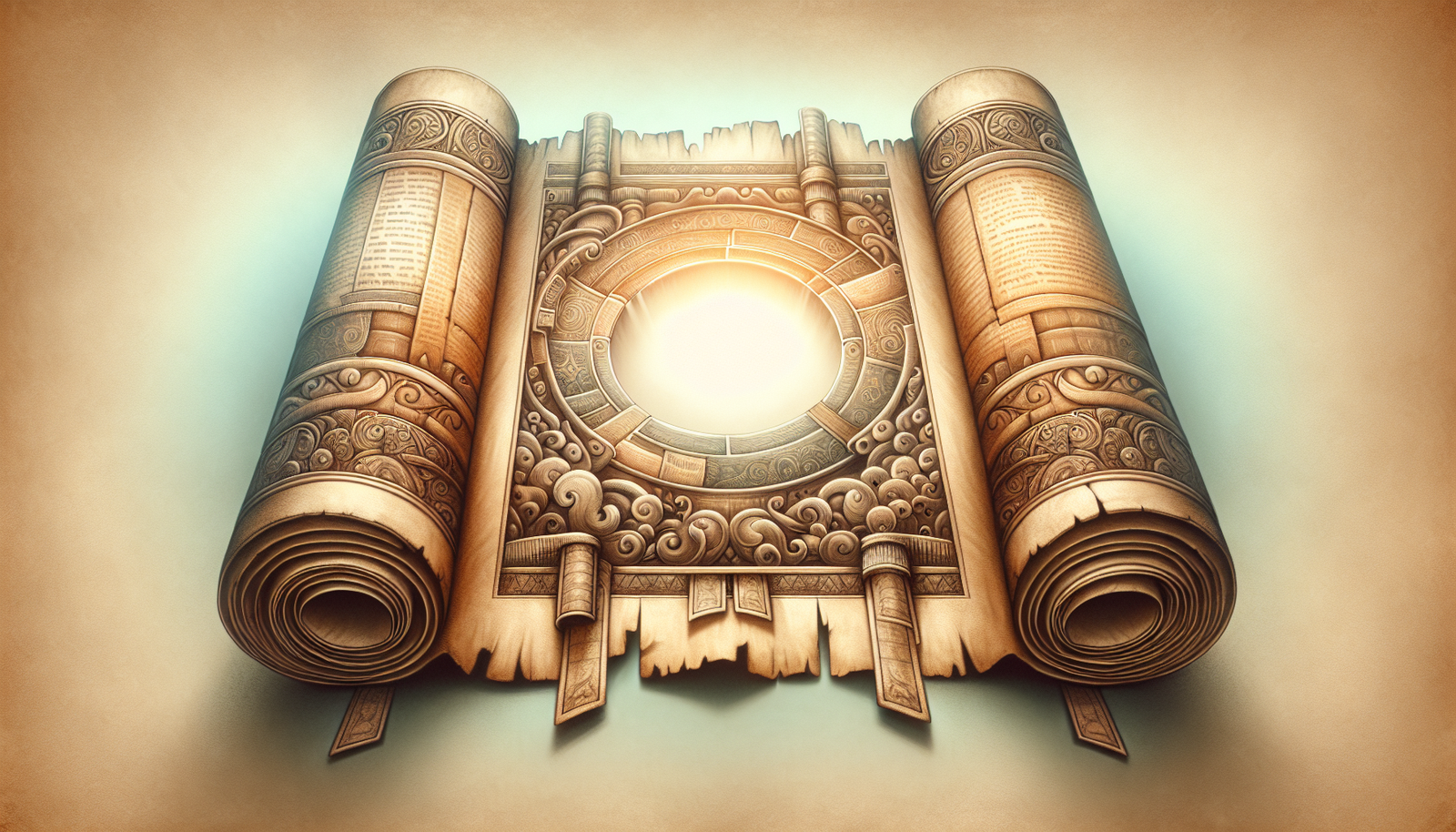What if the ancient scrolls hidden in the caves of Qumran could speak to us today? Would their messages tug at your heartstrings or spark a heated debate? The interplay of faith and discipline embedded in these biblical texts offers a fascinating glimpse into a bygone world—a world where spirituality often collided with the rigorous expectations of a devout community.

The Mystique of the Dead Sea Scrolls
Imagine standing beside the arid cliffs by the Dead Sea, feeling the weight of history pressing onto your shoulders. The discovery of the Dead Sea Scrolls in the late 1940s sent ripples through both the archaeological and religious communities. These ancient texts, buried for almost 2,000 years, have given humanity profound insights into the lives of their authors, believed to be the Essenes, a Jewish sect that thrived around the second century BCE.
The scrolls encompass a wide variety of writings, including biblical manuscripts, sectarian documents, and apocryphal texts. Each discovery at Qumran not only adds to the historical narrative but invites us into the lives, beliefs, and struggles of these ancient writers, grappling with the complexity of piety and strict adherence to religious law.
Qumran: A Community on the Edges
To fully appreciate the scrolls’ significance, it’s crucial to understand the context in which they were written.
Location and Lifestyle
Nestled in the desolate wilderness near the Dead Sea, Qumran didn’t seem like the prime location for an intellectual hub. However, it became a sanctuary for those seeking a return to a purer form of Judaism. The Essenes established strict communal guidelines, focusing on ritual purity, communal living, and the study of Scriptures.
- Communal Life: Members shared everything, from food to religious duties, fostering a sense of unity.
- Ritual Purity: The community prioritized cleanliness and purity laws, adhering strictly to the regulations outlined in texts like Leviticus.
It was the interplay between this rigid structure of life and the spiritual aspirations of the community that made the emergence of the scrolls both fascinating and contentious.
A Diary of Beliefs
The writings discovered at Qumran serve not just as religious texts but also as a mirror reflecting the community’s struggles. You find a blend of piety and rigor, like a needle and thread weaving together the fabric of their lives. For instance, the “Community Rule,” one of the key texts found, establishes standards for membership, behavior, and beliefs.
- Membership Guidelines: Induction into the community required a deep commitment to their strict codes and rituals.
- Behavior Expectations: The rules often emphasized rigorous self-discipline and adherence to the law, revealing a desire for moral rectitude amongst members.
This pursuit of holiness sometimes led to an iron-fisted approach toward transgressions, which begs the question: where does piety end and dogmatism begin?

The Scrolls’ Theological Landscape
Wading through the theological perspectives found within the scrolls reveals a complex interplay of ideas, tensions that are very much alive even today.
Messianic Expectations
One of the most intriguing aspects of the Qumran writings is their interpretations of messianic prophecies. The Essenes believed they were living in the end times and expected two messiahs—a priestly and a kingly figure. This dual-messiah concept adds to the depth of the community’s beliefs and raises questions about their adherence to traditional Jewish teachings.
- Scriptural Interpretations: Their interpretations expand the understanding of prophecies found in Isaiah and Daniel, showcasing both innovation and tradition.
- Crisis and Hope: The writings reflect a deep yearning for divine intervention amidst the chaos of their times.
These beliefs offer us insight into the future development of Christian thought, challenging you to consider how interpretations can shape faith communities.
The Struggle for Purity
At the core of the Qumran community was a relentless pursuit of purity. This longing is vividly illustrated in the “War Scroll,” which describes an apocalyptic battle between the “Sons of Light” and the “Sons of Darkness.” The struggle against impurity and evil resonates throughout the scrolls:
- Ethical Dilemmas: The text reveals the tension between pursuing righteousness and combating perceived threats to their faith.
- Communal Integrity: The emphasis on purity fostered a culture of both vigilance and anxiety within the community.
You can’t help but wonder how this relentless pursuit of purity mirrors today’s struggles for ethical integrity in faith communities.
The Tension Between Spirit and Law
The essence of the Qumran writings can be distilled into a central tension: the relationship between heartfelt spirituality and adherence to the law. This tug-of-war has reverberated through centuries of religious thought.
The Role of Law
For the Essenes, the law wasn’t just a set of regulations; it was a means to purify the soul and align oneself with divine will. They believed that following the law would lead them to spiritual enlightenment.
- Strict Compliance: The community operated under the premise that deviation from the law would lead to spiritual ruin.
- Consequences of Non-Compliance: Failure to meet the legalistic standards often resulted in severe penalties, emphasizing the community’s rigid approach to piety.
While their commitment can be admirable, you might question whether this level of legalism stifled genuine expressions of faith.
The Spiritual Dimension
Alongside their rigorous focus on law, the scrolls contain a yearning for a deeper spiritual connection. Writings like the “Thanksgiving Hymns” showcase a poetic understanding of one’s relationship with God, filled with evocative imagery and deep emotional resonance.
- Aesthetic Expressions of Faith: These hymns contrast with the dry legal codes, serving as a reminder that spirituality can be rich and multifaceted.
- Emotional Resonance: Even within a structured community, the writers sought a connection with the divine that transcended the confines of mere legality.
You might find inspiration in this duality, recognizing that religion can be both a guiding law and a deeply personal journey.
The Historical Significance of Qumran Findings
The archaeological discoveries surrounding Qumran continue to intrigue and excite historians, theologians, and archaeologists alike.
Discoveries and Excavations
From 1947 onward, numerous excavations have unearthed scrolls, pottery, and other artifacts, painting a vivid picture of Qumran’s historical significance.
- Archaeological Techniques: Employing advanced dating and preservation techniques has allowed researchers to authenticate the scrolls and better understand their historic context.
- Findings: The discoveries extend beyond the scrolls, including ritual baths, a unique pottery style, and even remnants of ancient agricultural practices.
Each artifact uncovered adds another layer to the compelling narrative of the Qumran community, leading one to consider the wider implications on our understanding of early Judaism.
Connecting Ancient and Modern
The discussions prompted by these findings are not merely academic exercises; they carry contemporary relevance that resonates with various faith communities today.
- Faith and Tradition: For many believers, understanding the ancient roots of their faith can deepen their spiritual connection.
- Cultural Contexts: The debates around the Qumran texts often mirror modern conversations about tradition versus contemporary beliefs within various religious contexts.
Consider the lessons that can be drawn from the Qumran community’s approach to both piety and rigor and how that dynamic continues to shape faith today.
Concluding Insights
The Qumran Fallen Beams serve as a poignant metaphor for the tensions existing between piety and rigor in faith life. The scrolls unearthed in the dusty caves echo the struggles of their authors, who grappled with deep questions about purity, faith, and the essence of true spirituality.
As you reflect on these writings, think about how their struggles continue to resonate in our modern landscape. The dichotomy of strict adherence versus heartfelt spirituality remains relevant, challenging you to ponder where you stand within this age-old tug-of-war.
Just as the ancient texts continue to inspire debate and curiosity, your own exploration of these themes can lead to a richer understanding of faith that honors both the structure of law and the depth of personal spiritual experience.



